Push Notification as an integral part of UC&C system
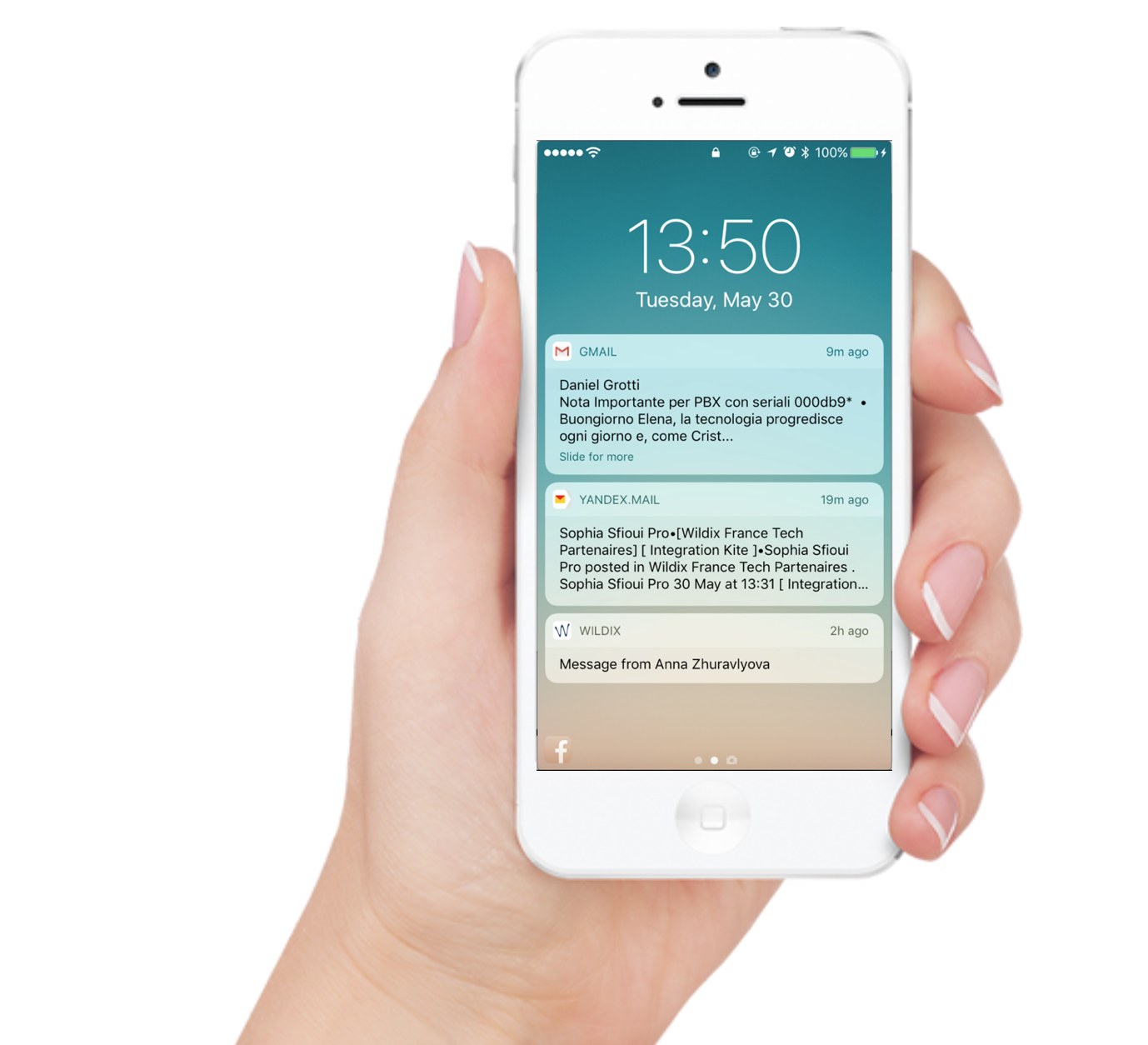
Push notification is a message that pops up on the screen of your mobile device when you are not using the app. In fact we’ve been using push notifications for quite a long time. An example could be a notification coming from the airlines reminding you to check in for your flight or a calendar event reminder.
Apple was the first one to introduce Push notifications in 2009, Google implemented them in 2010. Today push notifications are becoming even more powerful, and we will see why in the next chapter.
Push notification vs Polling and other techniques
In the past many VoIP apps have been using polling techniques, in which the client had to poll the server from time to time to check if there are any updates. They were not actually real-time–you received a notification not at the very time it arrived, but after the app has “polled” the server. Other VoIP apps were running in the background all the time so that the user could receive an update, over-consuming the battery.
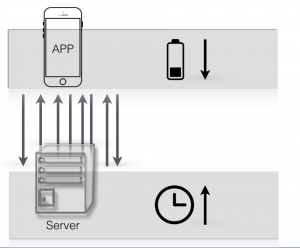
In the recent years Apple and Google have introduced a new type of Push notifications, allowing the application to “wake up” in the background when needed and receive an update, instead of keeping the app running in the background all the time. The app no longer needs to manually “poll” the server for eventual updates–push notifications originate from the server.
This type of push notification allows you to receive a call or a text, not only when your VoIP application is running in the background, but even in case your application is closed, within seconds delay. This new type of push notifications introduces the following benefits:
- Real-time communication
VoIP apps are made to be real-time, since users expect to use them for “online” communications, not “offline”. With push notifications user can be sure to receive a call or a chat with seconds delay, and not “every now and then”, when the app polls the server.
- Significant improvement of the battery life
The point is that you no longer need to keep the app running. You can close the app and in this way, prolong the battery life, but still “be notified” of every incoming event.
- Fast interaction
One more important improvement is that user no longer needs to first open the app and then handle the notification. Today users can be given a certain list of options (e.g. respond, cancel) to interact with the app once a push notification arrives.
The benefits of such push notifications are remarkable, especially when it comes to VoIP / IM apps. This is why so many consumer mobile apps have already implemented them. FB messenger, Viber, WhatsApp, Skype are among them.
Push Notifications in Enterprise Mobile apps
The question is, why so many UC&C providers are still reluctant to add this important feature to their mobile apps? In fact some vendors claim to have added support for push notifications, but they are not exactly what users expect them to be.
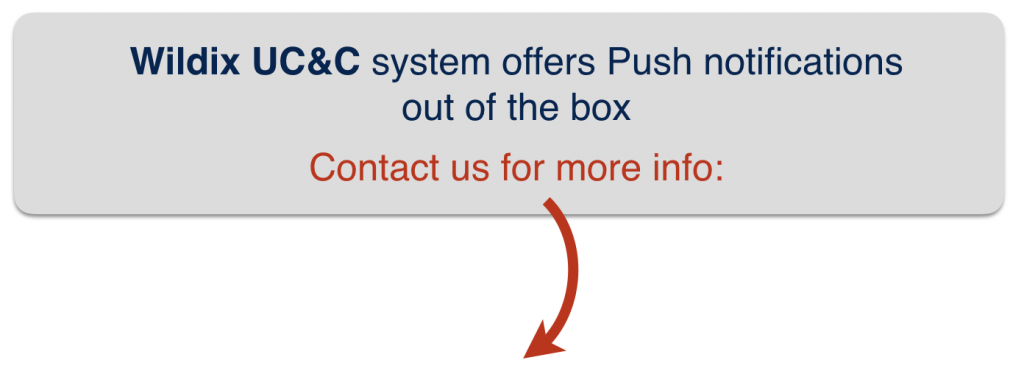
Perhaps UC&C vendors do not consider push notifications as an important feature. Below we will bring up the most common delusions about push notifications.
Push notifications distract employees
Yes, they do. They do distract, when they come from consumer apps your employees are using to communicate with their family and friends.
However when it comes to push notification in a mobile app used for business communications, it is not a distraction. Quite on the contrary, it is an indispensable feature that allows your employees not to miss any important text or call coming from colleagues and customers.
Push notifications over-consume the battery
Yes, it is true, because many vendors in practice still use the old type of notification which require the app to be running in the background all the time. Unlike, for example, Wildix, who has already implemented the new logic of push and minimized the battery usage:
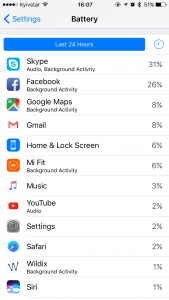
What happens is that in the most critical situation you find out that your mobile phone is running out of battery and you can no longer make a call. Eventually you realize that something is wrong and detect the “harmful” app which is over-consuming the battery and most often you end up with quitting or deleting the app. As a result, you are no longer reachable once you walk away from your office desk.
Push notifications are not reliable.
The response is the same: yes, they are, in case your UC&C vendor has not implemented the new logic of push. Suppose you are on a train and you are going through a long tunnel. Those communications arrived within a period of time when the app was down, will never reach you. It’s indeed not reliable.
On the contrary, with the new logic a push notification will attempt to reach your device during a certain period of time, to make sure you do not miss anything even in case you’ve briefly lost Internet connection.
At this point using consumer apps for business communication might seem more reliable than using “professional” mobile apps from the majority of UC&C providers. The question is whether it is really Unified Communication solution that those vendors offer and make you pay a lot of money for?
Push notifications are too difficult to activate
It is true that some vendors have added support for the new type of push notification. However it requires particular skills and hours of work to activate them. Just an example, to enable push notifications on Android devices, it might be necessary to follow up to twenty steps including registering a Google API project with Google developer console.
Push notifications are annoying
Push notifications are annoying when they are irrelevant to you and poorly-timed. But in our case we are not talking about push notifications from mobile marketers. We are talking about a call from your customer or a chat from your colleague that you do not want to miss.
Moreover, a professional implementation of push should provide a user with an option to deactivate push notifications when they are not needed, for example during closing hours or vacations.
Push notification out of the box
As mentioned previously, Wildix is one of those few vendors who have fully implemented Push notifications into their UC&C platform for business communication.
- Real-time communication: because UC&C are made to be real-time
- Out of the box: push notifications are available for every user who has installed the app, no installation or activation required
- Users have an option to disable push notifications: by simply changing their status to “offline”
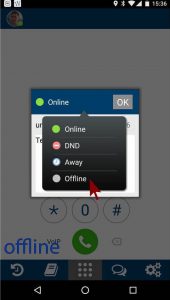
- Users have an option to control push notifications: advanced call routing scenarios can be applied, where users receive no calls out of the office hours, or based on their status in Outlook calendar
Wildix system implements Push Notifications out of the box in Mobile Apps and Google Chrome, contact us for more information:
Push notification is an integral part of a UC&C solution and its goal is to improve communication and maximize the user experience.
Let’s see in which way mobile app developers can implement this new type of push notification.
How push notification works with APNS and GCM
Normally there are four parties to consider:
- Mobile application
- iOS / Android device
- APNS (Apple Push Notification Service) / GCM (Google Cloud Messaging)
- The 3rd party server of the application provider
After the app is downloaded and installed, it sends a token request to Apple / Google notification services. Once the token is received, the app sends it to the app provider. This is how Apple / Google service knows which devices push notifications must be routed to.
Every time the app provider sends a push notification, it is routed through APNS (for iOS) / GCM (for Android), and then delivered to the end user devices within a few seconds.
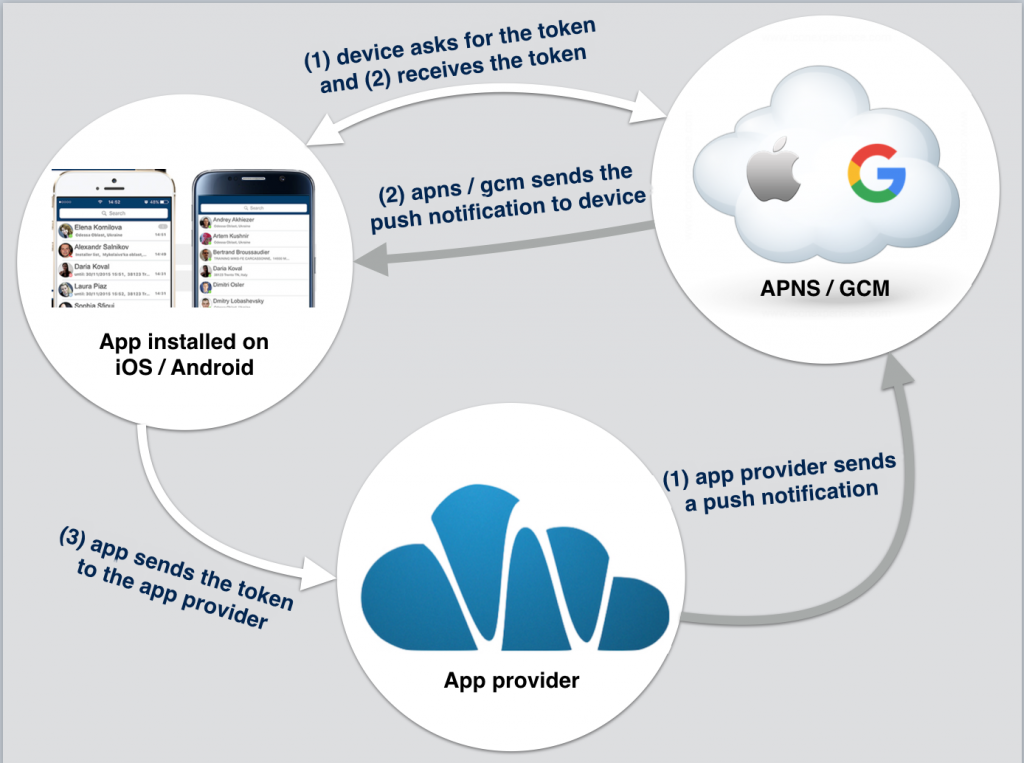
From the scheme it is evident that this mechanism is quite simple. White arrows represent the way device is registered to receive push notifications, while grey arrows show the way push notifications are handled.